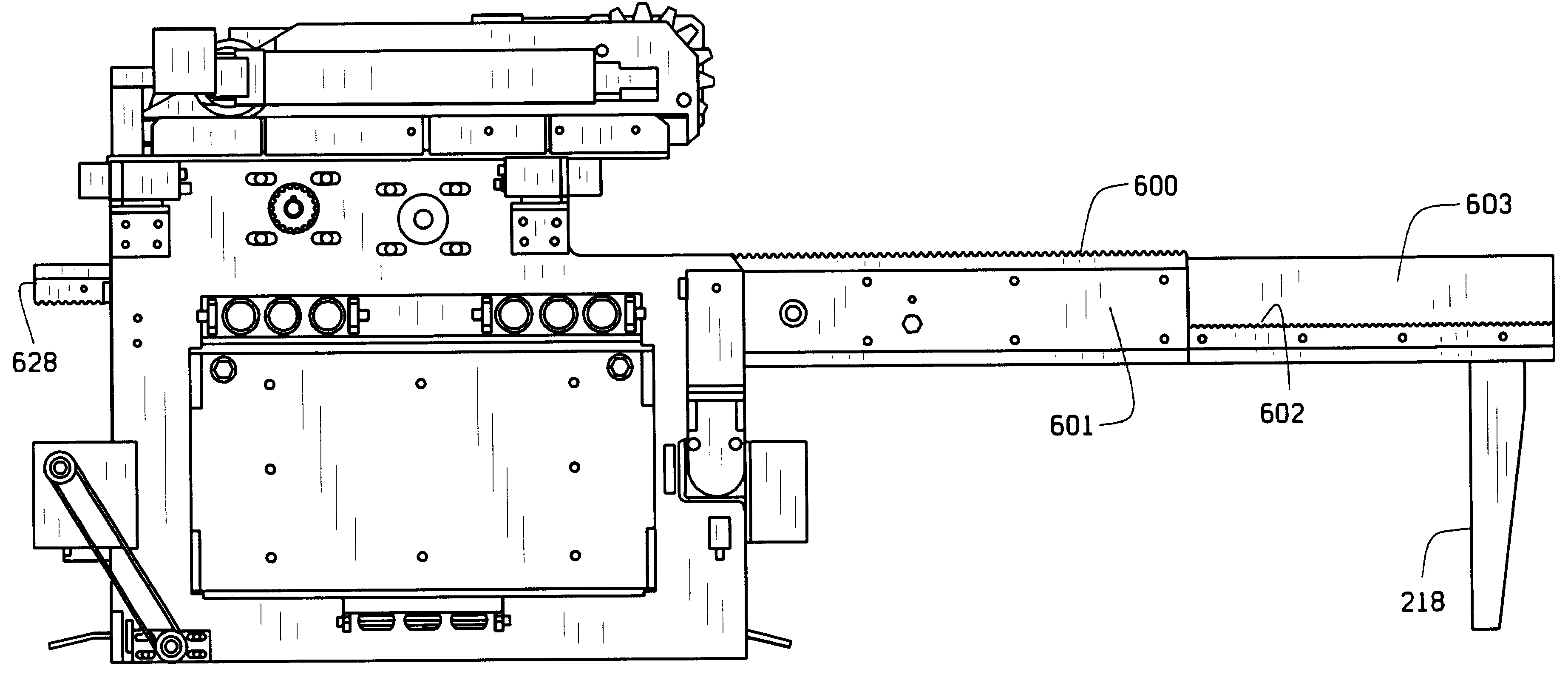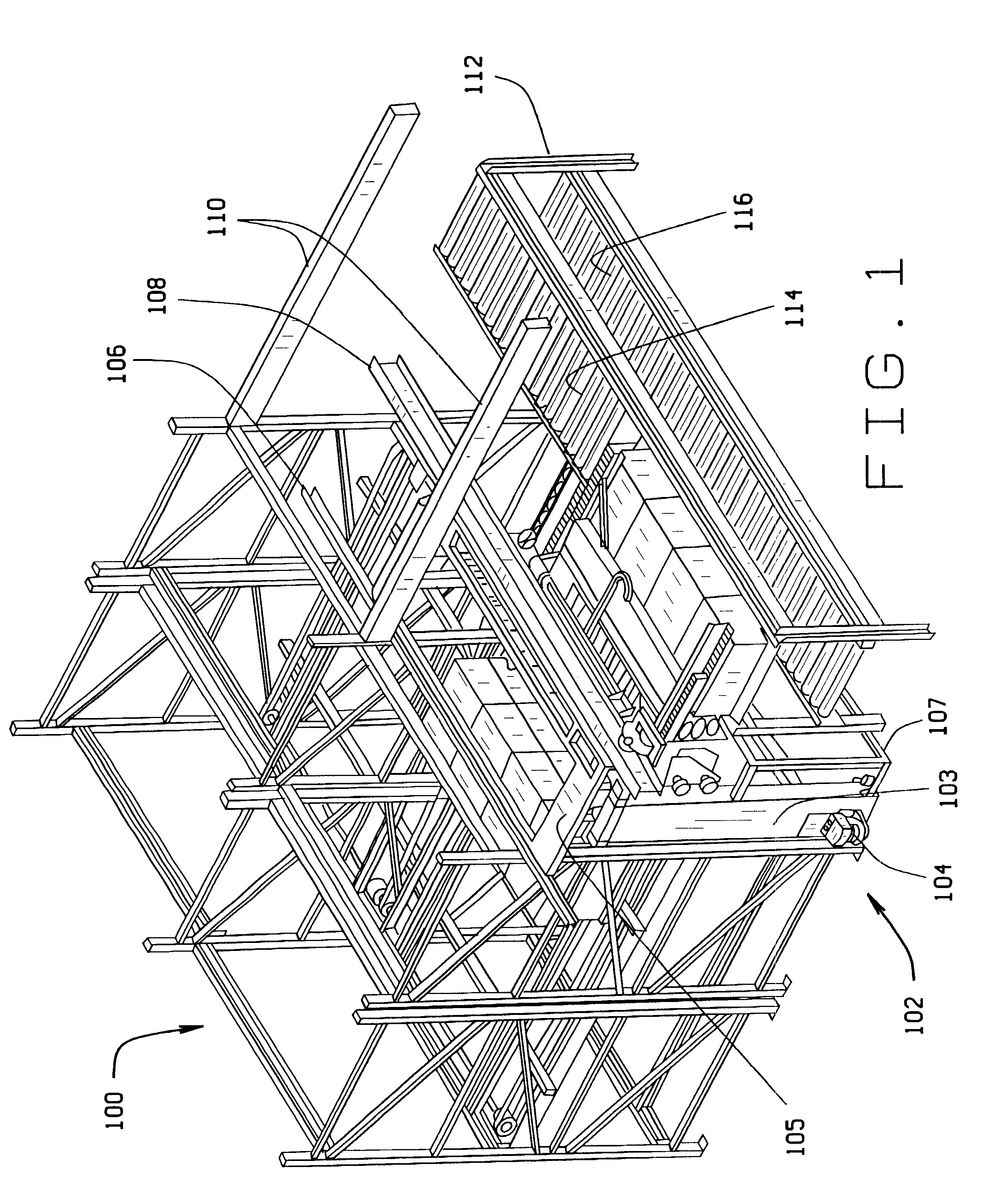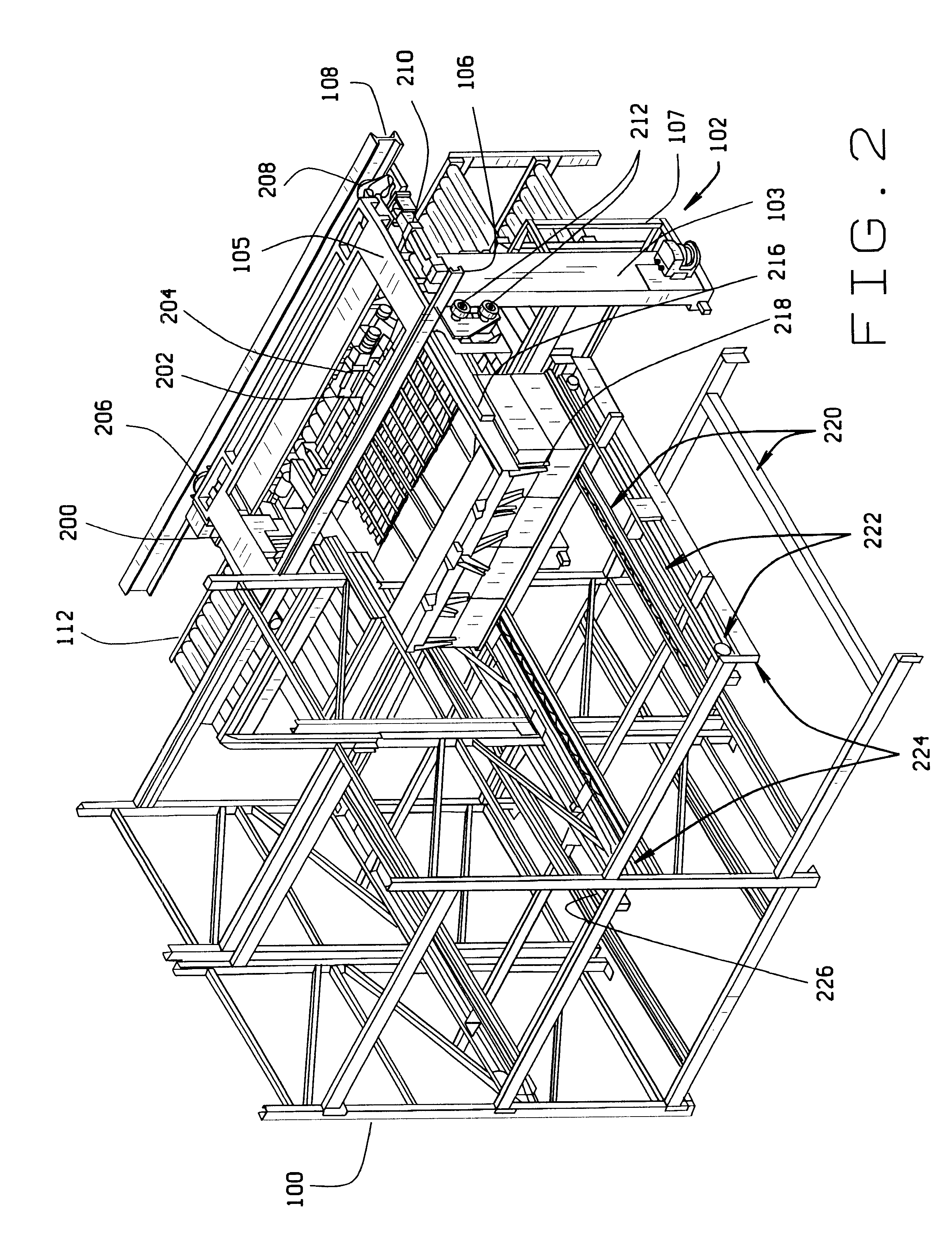Item handler and method for flow through storage
a flow-through storage and item technology, applied in the field of automatic item handling system and methods, can solve the problems of limiting the use of systems requiring hydraulic fluid to function, less modern existing storage facilities, and modification of existing storage facilities, so as to accommodate a more modern and different type of storage system
- Summary
- Abstract
- Description
- Claims
- Application Information
AI Technical Summary
Benefits of technology
Problems solved by technology
Method used
Image
Examples
Embodiment Construction
Referring to FIG. 1, a top right front perspective view of a portion of the flow through storage bins 100, the remote vehicle 102, and a portion of the conveyor system 112 is shown on the picking side of the flow through bin. Also shown in this view, is a collision avoidance sensor 104 operatively attached to the remote vehicle 102. The remote vehicle 102 is suspended from the overhead track rails 106 and 108. The remote vehicle is freely suspended having no support underneath. The remote vehicle 102 travels on the track rails 106 and 108 by wheels that are fitted in the track rail slots thereby providing an overhead traction mechanism. Track rail 108 provides power to the remote vehicle. The parallel track rails 106 and 108 are supported by a plurality support members 1110. The basic construction of the remote vehicle frame comprises a pair of upright side frame members 103 having a hollow interior volume to house an elevation mechanism. Only the right side frame member of the pair...
PUM
 Login to View More
Login to View More Abstract
Description
Claims
Application Information
 Login to View More
Login to View More - R&D
- Intellectual Property
- Life Sciences
- Materials
- Tech Scout
- Unparalleled Data Quality
- Higher Quality Content
- 60% Fewer Hallucinations
Browse by: Latest US Patents, China's latest patents, Technical Efficacy Thesaurus, Application Domain, Technology Topic, Popular Technical Reports.
© 2025 PatSnap. All rights reserved.Legal|Privacy policy|Modern Slavery Act Transparency Statement|Sitemap|About US| Contact US: help@patsnap.com



